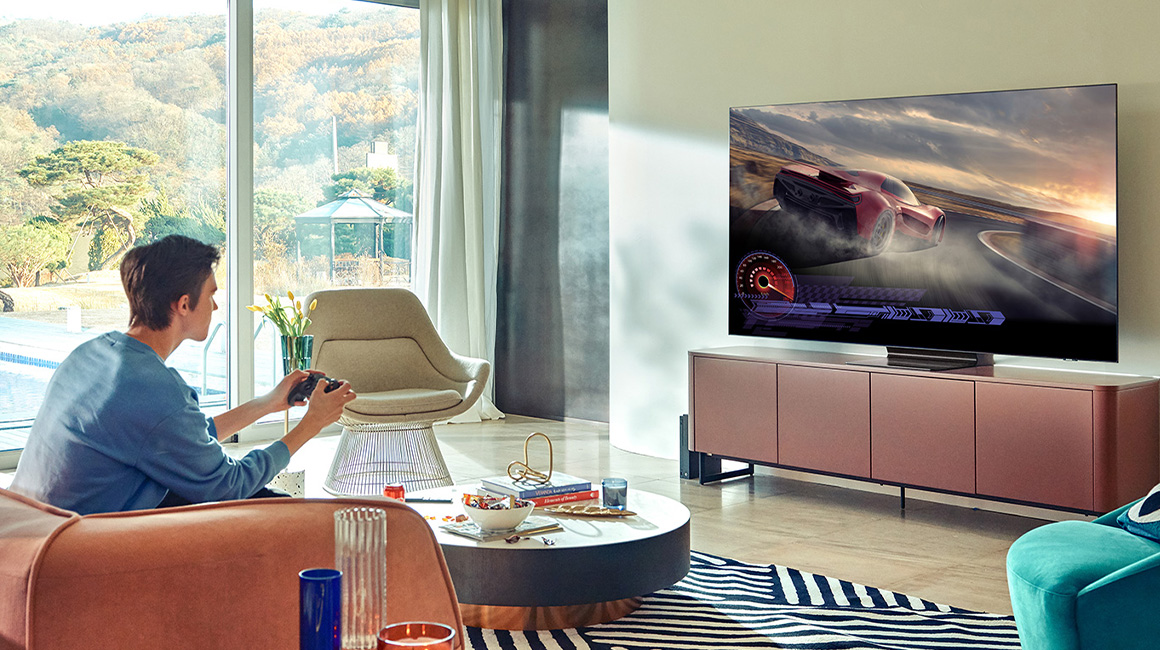If you’re a gamer, you know how important it is to have a great TV for your intense and competitive gaming sessions. Having a TV that’s not made for gaming can even dampen your gaming skills and affect the results of your gameplay. This can be prevented by using the best TV for gaming that’s compatible with your gaming console.
Also Read: Comment faire un talk show avec cyril hanouna et dorian rossini
In addition to owning the perfect gaming TV, you should also keep an eye on your room’s humidity. Humidity can damage your electronics like TV and console, which can cost you hundreds of dollars. To do this, you install a temperature and humidity monitor and alert system in your house so you can remotely know when your home has increasing humidity levels. Having a monitoring system like this will ensure a smooth gaming experience and a longer lifetime for your electronics.
Choose low input lag for better response time.

One of the first things you want to check out for your new gaming TV is latency. Latency, or lag, is the time it takes for your TV to show an image on the screen. If you’ve ever played a videogame, you know how horrible lag can be for your gameplay. It can turn even the best gamers into noobs. When getting your new TV, be sure the latency is at least below 30ms—if you’re a hardcore gamer, maybe go for something under 13ms.
Find the right refresh rate.
Additionally, you should pick your TV’s refresh rate—the refresh rate will help make your frames transition smoother so your gameplay never freezes or tears. TVs with VRR, or variable refresh rate, will help make these transitions more smoothly with FPS of 30, 60, and 120. VRR will also help eliminate lag for more detailed and fluid gameplay.
Pick a high resolution that’s compatible with your gaming console.

Another thing you’re going to want to look out for in a gaming TV is a higher resolution. This factor is just as important as the rest when choosing a new gaming TV because it’s what determines how your games’ images are going to look on your TV—lower resolution will result in pixelated imagery. Some of the most popular resolutions include 4K (UHD), 1080p, HDR, and 2K (QHD). Your TV’s resolution should also be on par with your gaming console‘s capabilities because not all consoles support a 4K, for instance.
Choose a quality display technology for better visuals.
LCD? QLED? OLED? There are so many different fancy names for every modern TV display technology that comes out, but what do they mean? Your TV’s display technology involves colors, deeper blacks, image quality, contrasts, and even the TV’s screen shape.
Ensure you have matching connectivity for your gaming console.

Your console will have its unique set of requirements for video output. For instance, the PS5 supports video outputs of up to 4K resolutions, so if you connect it to a TV that has a higher resolution like 8K, then the compatibility between the TV and console will not be optimal, thus causing issues in the image quality and performance.
Get the right size.
Lastly, you want to ensure you get the right size for your new gaming TV. You’ll need to consider your gaming setup and budget for this one. A TV’s screen size will noticeably increase its price—you’ll very likely have to pay a difference of hundreds of dollars for 20 or more inches of screen depending on the brand. For example, deemed one of the best gaming TVs of 2021, the LG CX OLED TV will cost you around $2,800 if it’s 77 inches while the 55-inch version will cost you around $1,400.
Be sure to check your console’s supported resolution and specs prior to purchasing a new gaming TV so you can get the best deal for what you want and need.









